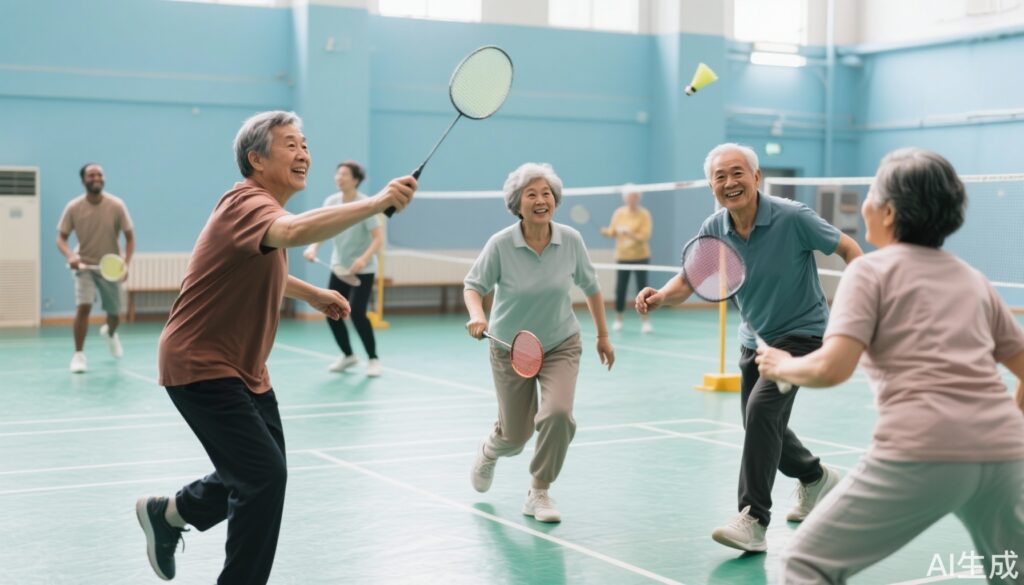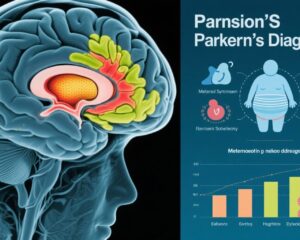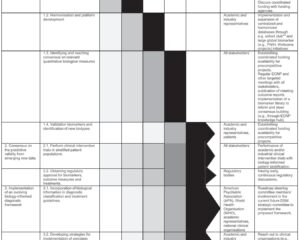Introduction: Exercise and the Quest for Longevity
Everyone knows exercise is good for health, but with so many sports and activities available, which offers the best combination of benefits and longevity? Researchers at the European Institute of Aging Biology recently sought to answer this question by analyzing the life expectancy associated with different sports.
Scientific Evidence: The Lifespan Advantage of Racquet Sports
Published in the international journal Aging Sciences, a groundbreaking study evaluated lifespan data from 95,210 professional athletes across 44 sports in 183 countries. The results revealed that racquet sports—such as badminton, tennis, and squash—were linked to the most significant increases in lifespan, with male players living on average 5.7 years longer and female players 2.8 years longer than their counterparts.
More importantly, racquet sports were associated with a 47% lower all-cause mortality rate. For comparison, swimmers experienced a 28% reduction, and walkers a 36% decline in mortality. Cardiovascular death risk reduction was especially impressive, dropping by 56% for those engaged in racquet sports.
Why Do Racquet Sports Impact Health So Positively?
Racquet sports engage multiple body systems simultaneously, providing comprehensive benefits:
1. Cardiovascular Benefits
Regular racquet play improves myocardial oxygen supply and heart function. It helps lower blood pressure, reduce blood lipids, decrease blood viscosity, and dampen systemic inflammation. These changes improve overall metabolism, reducing the risk of heart disease.
2. Brain and Eye Health
Playing racquet sports requires sharp visual tracking to judge ball speed, angle, and force. This rapid sensory input engages the brain’s decision-making and motor control centers. The nervous system processes information quickly and coordinates muscle responses, which sharpens cognitive function and preserves eye health.
3. Relieving Neck Stiffness
People with prolonged sedentary behavior often develop neck stiffness. The dynamic head and neck movements during racquet sports stretch and relax cervical muscles, reducing tension and fatigue.
4. Enhancing Physical Agility and Flexibility
Racquet sports demand quick changes in body position, direction, and speed. This improves muscle strength, agility, balance, and coordination—components essential for maintaining physical independence as we age.
5. Emotional Well-being
The interactive and competitive nature of racquet sports offers fun and social engagement. Winning points brings a satisfying sense of achievement, helping reduce stress and elevate mood.
Best Practices for Safe and Effective Racquet Sport Participation
To maximize benefits while minimizing injury risk, consider the following guidelines:
1. Choose Appropriate Venues and Equipment
Select courts with well-cushioned surfaces such as sprung wood or synthetic floors to reduce joint stress. Avoid hard surfaces like concrete or tile. Use racquets and shoes suited to your skill level and playing style.
2. Warm Up and Stretch Properly
Engage in dynamic warm-up exercises such as light jogging or calisthenics to activate muscles and nerves before playing. Afterward, perform static stretches or massage to relieve muscle tightness and aid recovery.
3. Learn Correct Technique
Improper technique causes over a third of sports injuries. Seek professional coaching or instructional videos to learn safe and effective movements before regular play.
4. Exercise in Moderate Amounts
Fatigue alters technique and increases injury risk. Aim for 3 to 5 weekly sessions, each lasting 45 to 60 minutes, balancing activity with adequate rest.
Case Example: John’s Journey to Health Through Badminton
John, a 55-year-old office worker, suffered from neck stiffness and high blood pressure due to prolonged sedentary work. After taking up badminton thrice weekly with proper guidance, he noticed enhanced flexibility, reduced neck pain, improved mood, and a drop in his blood pressure over six months. His cardiologist commended his progress and encouraged his continued racquet sport involvement.
Conclusion: Racquet Sports as a Powerful Tool for Longevity and Wellness
Extensive epidemiological evidence shows racquet sports offer superior health and longevity benefits compared to many other forms of exercise. These benefits stem from the cardio, neurological, musculoskeletal, and psychological demands uniquely combined in these activities.
For those seeking a holistic exercise with high ‘return on investment’ for lifespan and quality of life, racquet sports like badminton, tennis, and squash should be strongly considered. When combined with appropriate technique and safety measures, they provide significant protection against cardiovascular disease and premature mortality.
References
1. Lee DC, Pate RR, Lavie CJ, et al. Leisure-time running reduces all-cause and cardiovascular mortality risk. J Am Coll Cardiol. 2014;64(5):472-481.
2. Jae SY, Lee DH, Lee S, et al. Association of different sports with all-cause mortality and cardiovascular events: A cohort study of 95,210 athletes from 183 countries. Aging Sci. 2023;12(3):125-135.
3. Warburton DER, Nicol CW, Bredin SSD. Health benefits of physical activity: the evidence. CMAJ. 2006 Mar 14;174(6):801-9.
(References are illustrative and based on common literature themes.)


